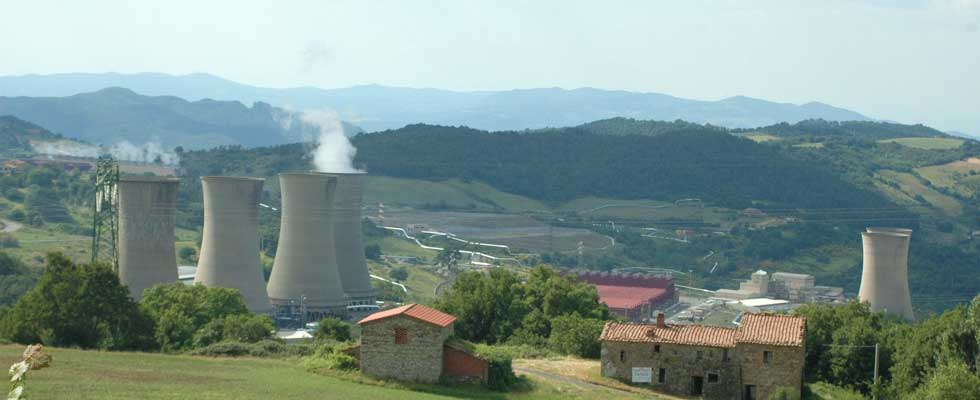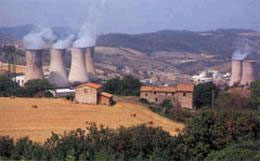
| Weather forecast | Web cam | Weather station | Contact us | Photo Gallery | Links | Search |
| Getting there | Nature | Culture | Epicurean living | Activities | Routes | Our hotel |
Larderello

(Larderello Chimneys)
Larderello is a geologically active area of southern Tuscany , Italy , which is renowned for its geothermal productivity. The region was known from ancient times for its volcanic nature and exceptionally hot springs . The Romans used its sulphur springs for bathing.
Known as Montecerboli until the 19th century, it became one of the first places in the world where geothermal energy was exploited to support industry. In 1827 François de Larderel, a Frenchman, invented a way of extracting boric acid from the volcanic mud by using steam to heat cauldrons to separate the two. Leopold II, Grand Duke of Tuscany was an enthusiastic supporter of Lardarel's scheme and awarded him the title of Count of Montecerbolli a decade later. A town, named Larderello in honour of Lardarel's work, was founded to house the workers in the boric acid production factory. The region was the site of a pioneering experiment in the production of energy from geothermal sources in 1904, when five light bulbs were lit by electricity produced through steam emerging from vents in the ground - the first ever practical demonstration of geothermal power. In 1911, the world's first geothermal power plant was built in the Valle del Diavolo ("Devil's Valley"), named for the boiling water that rises there. It was the world's only industrial producer of geothermal electricity until 1958, when New Zealand built a plant of its own. However, the supposedly earliest recording of geothermal energy being put to other uses was in 1890 and 1891, when the United States city of Boise , Idaho commissioned the drilling of two geothermal wells to supply hot water for the city.
Larderello now produces 10% of the world's entire supply of geothermal electricity, amounting to 4,800 GWh per year and powering about a million Italian households. Its geology makes it uniquely conducive to geothermal power production, with hot granite rocks lying near unusually close to the surface, producing steam as hot as 220 °C ( 396 °F ). However, in recent years concerns have been expressed about the sustainability of its steam supply, as a 30% drop in steam pressure levels has been recorded from the maximum levels of the 1950s.
The region has experienced occasional phreatic volcanic eruptions, caused by explosive outbursts of steam trapped below the surface. It possesses about a dozen explosion craters 30- 250 m in diameter. The largest is the Lago Vecchienna crater, now filled by a lake, which last erupted around 1282.